It’s autumn and friends are asking me what I am doing in the garden – am I putting it to bed for the winter? If my garden is a theatre show then far from closing the curtain and packing the props away, autumn is all about rebuilding the stage and casting the actors for next season’s run.
In this article I write about my new pond and a woodland path project. If you want to read previous posts about these projects, click the links below.
Shelves for pond marginals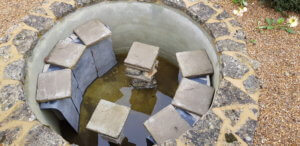
Back in the summer I wrote about how I’m building a new pond. Since then it’s been full of water but little else as we waited to make sure that it is water-tight. There was some water loss over the summer but only due to evaporation and a lack of rain.
This week the water was pumped out so that we could build shelving for marginals. These were made out of concrete blocks, covered in dark butyl lining to calm down the garish light blocks and then topped off with old paving stones. They’re not quite finished yet as I have asked a contractor to cut triangular slivers to fill in the gaps between the pavers but I think they’ll work a treat and provide a stable base for some attractive marginals to fringe the pond.
We have also built a couple of pillars in the centre of the pond for water lilies, again made from concrete blocks and topped with a pavers. This pond is deep and the water lilies will need to be started off high up in aquatic baskets and slowly moved down as the leaves extend away from the crown.
Pond Research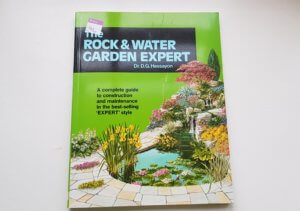
As with many of my garden projects, I rushed in with my pond before researching in detail. This week I finally got around to reading the relevant sections of my water garden book by Dr D G Hessayon, picked up in a charity shop for 99p. I was keen to understand how to achieve a good balance in the water and to start researching plants.
In pond management terms, achieving a good balance in the water refers to a “pond-keepers” balance – whereby the water provides good conditions for plants to thrive but not for algae to take over. The steps needed to achieve balance include keeping the pond free of debris, providing shading using the cover of plants and adding in some oxygenating plants.
Dr Hessayon panicked me when he went on to say “Pond size is a critical factor…it will be difficult or impossible to achieve balance if your pond is too small.”
Is my pond too small? I had to delve all the way to pay 118 or the 127 page book to discover that 40sqft (4sqm) is the minimum surface area required for a balanced pond. A revisit to the magical ‘O’ level maths equation of πrsquared allowed me to calculate the surface are to be just over 2sqm. I’m going to do further reading though since my pool is deep and I’m sure depth must somehow play a part too…
This is all academic anyway. My pond is built and the chosen site could not have accommodated a larger pool.
Erythronium dens canis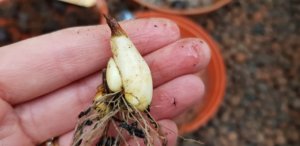
Look at this amazing little tubur. Dens canis means dog’s tooth and these little Erythronium tuburs really do look like a mutt’s gnashers.
I bought these a year ago and grew them in a pot hoping for some pretty pink flowers but sadly only got leaves.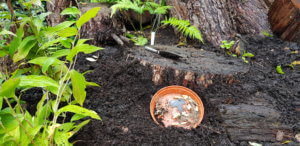
As they like partial shade and humus rich but well drained soil I’ve decided they may like my new woodland area. Yesterday I tipped them out of their pot and planted them in a little clump near a large stump. I hope they’ll be happy there and reward me with flowers next spring.
Gunnera manicata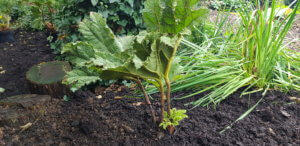
My mail-order gunneras arrived this week and are fine specimens. I bought them from Thompson and Morgan as they had a good price when buying two plants in 5 litre pots.
I have improved the soil here with compost and soil improver but I still incorporated plenty of additional compost into the planting hole to ensure a humus rich home for my new plants. I’m really hoping they love it and reward me with huge leaves.
Roscoea purpurea ‘Red Gurka’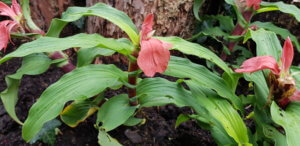
I can’t decide if I like this plant or not. It’s a good addition to my woodland area and should suit the conditions there but I find the stems a bit like bamboo, standing upright like soldiers in parade. It’s a hardy member of the ginger family and they almost look too rigid and formal for a relaxed woodland area. The flowers are pretty special though, looking very similar to orchids. 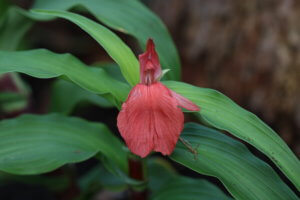
Further redevelopment plans
As if I haven’t already got too much to do in the garden, I’m going to build a rockery. I want to show you the reason why I need to get cracking with it – my alpine plant nursery is bursting at the seams.
Last year I bought 23 packets of seeds from the Alpine Garden Society seed exchange and whilst they haven’t all germinated, most have and I now have a good little collection of rockery plants waiting for a home.
This is the first time I’ve grown a large range of alpines from seed and it’s been a rewarding experience. I’ve written about what’s worked well and what hasn’t for the Alpine Garden Society’s website. If you want to know more about it and how I lovingly raised a rogue in my greenhouse click here.
This seasonal diary is part of a weekly link-up of garden bloggers from around the world, called Six on Saturday. For more information and links to other blogs crammed with gardening activity, check the blog of host The Propagator.
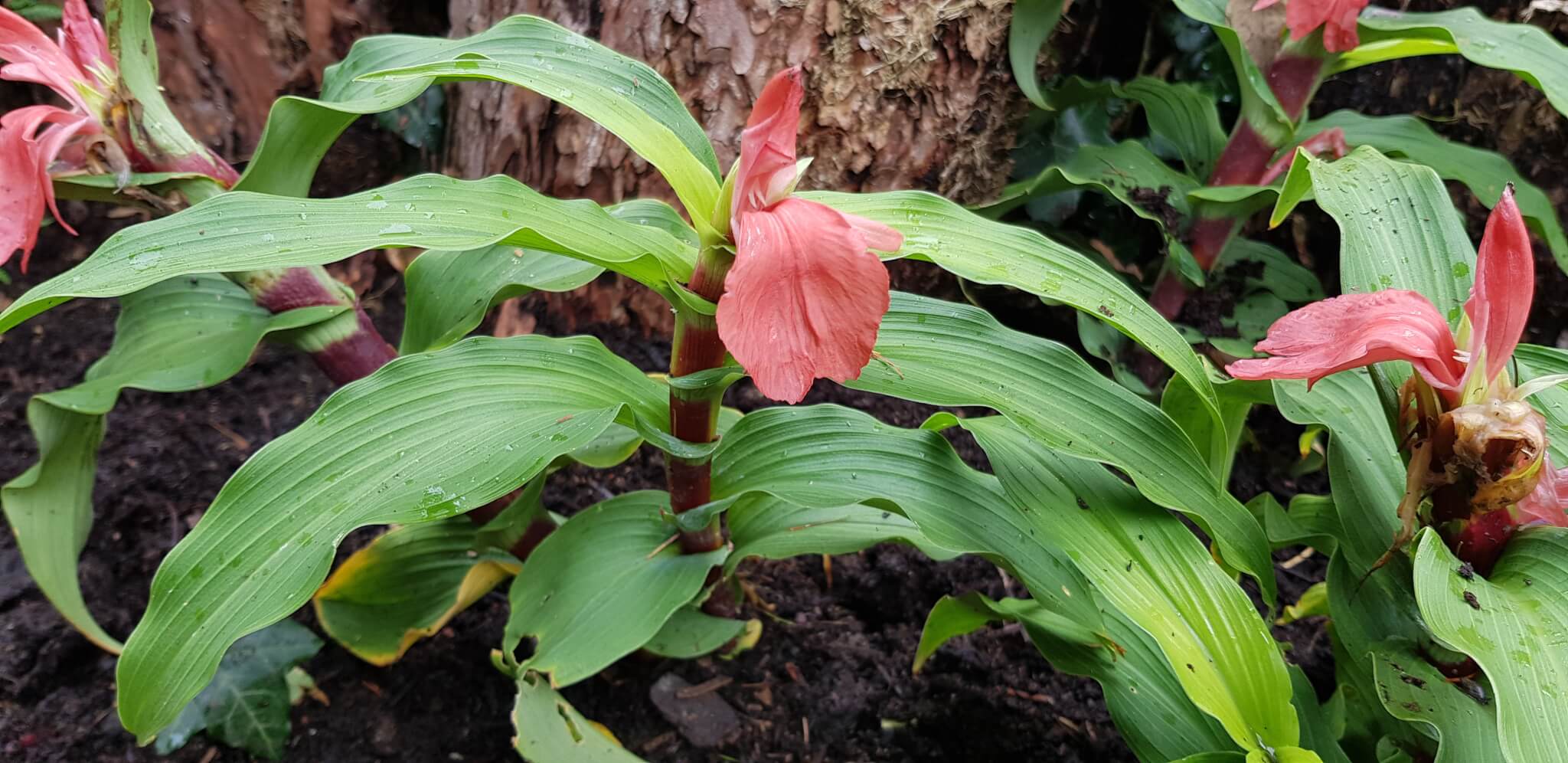
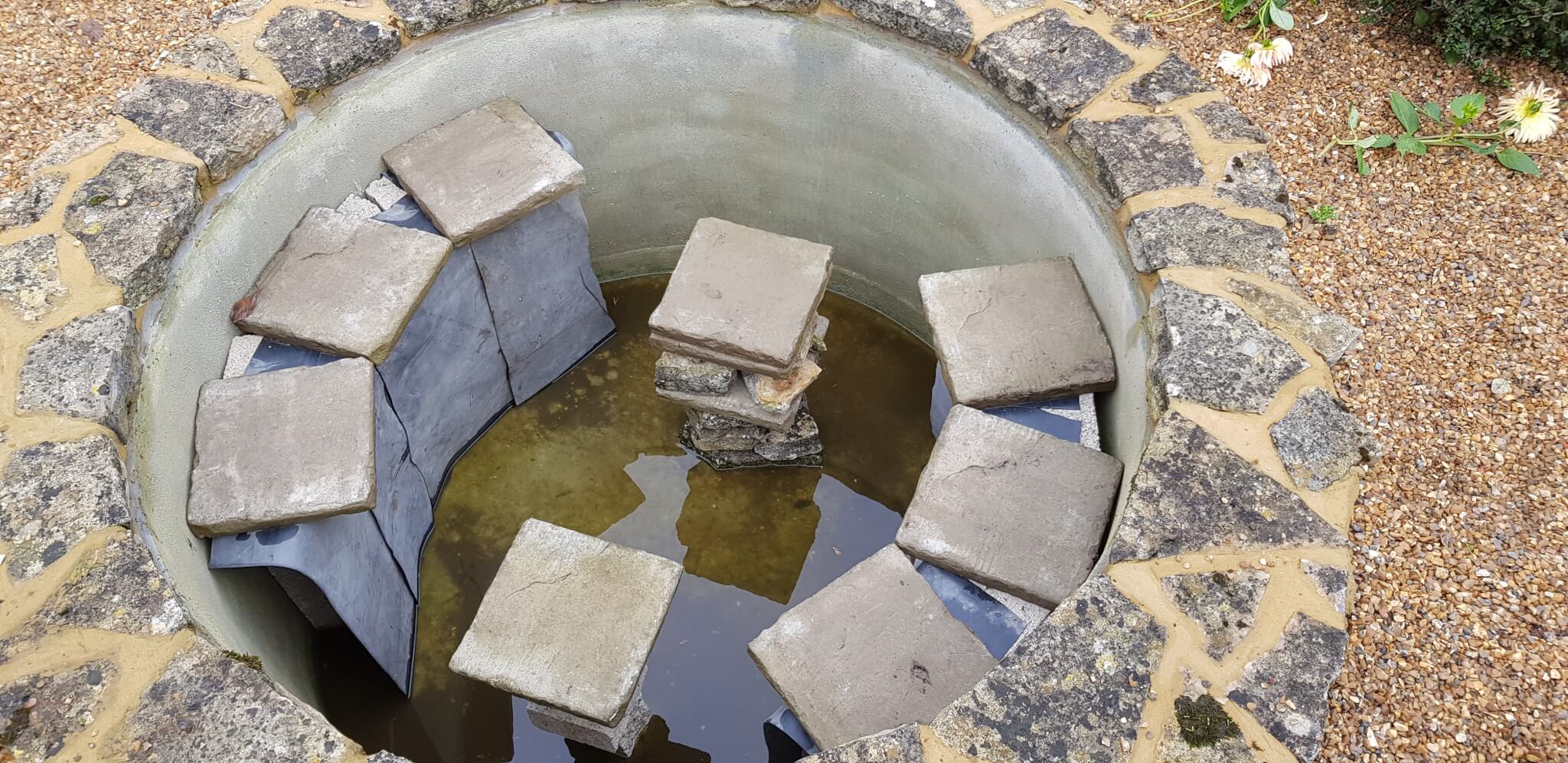
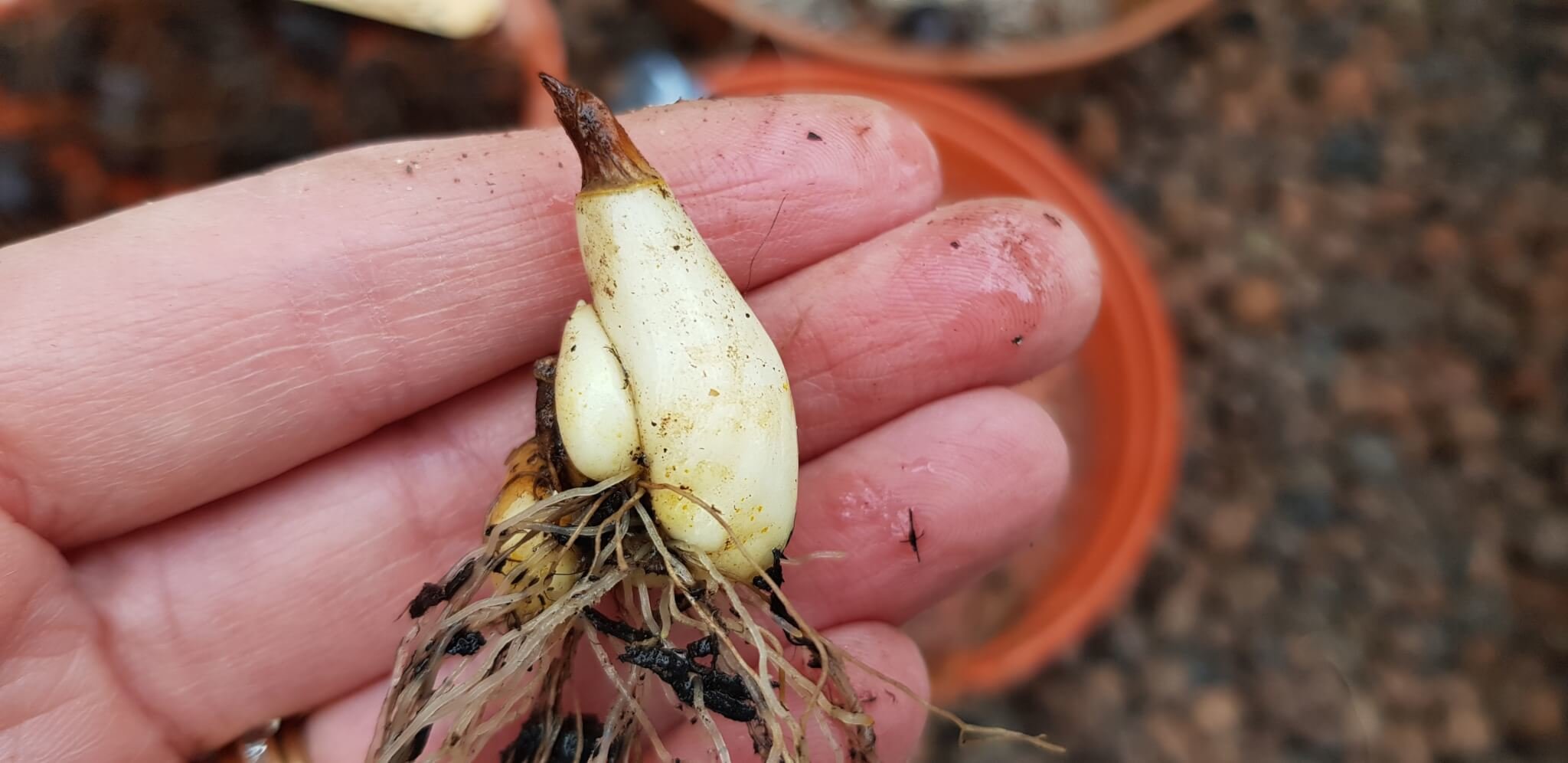
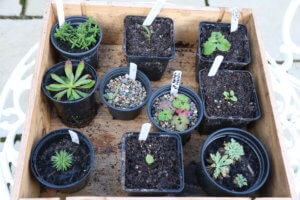
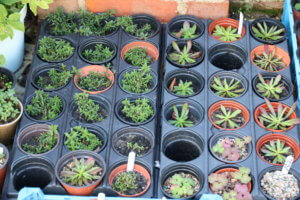

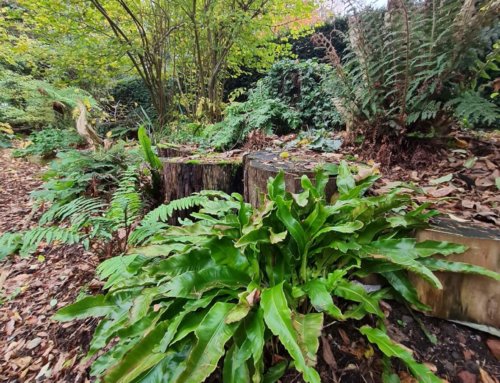
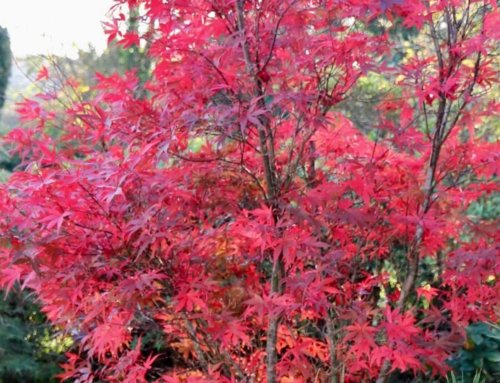
Remember me the depth of your pond? My waterlilies begin effectively at 20cm under the water level and at the end of the season I plunge them to 50cm
Erythronium really looks like a dog’s tooth! It is surprising !
For your gunnera think of adding manure and compost each winter. Mine slowed down because I had not done it … I had to move it and start over. We’ll see next spring.
Hi Fred, the pond is about a metre deep so plenty of volume if not surface area. The good thing about the water lilies being on block pillars is that I can move them to the required depth easily. Good tip about the manure for the gunneras. I have a couple of bags lying about so I’ll get onto that now.
Great to the see the progress of your pond. Looking forward to seeing it when completed. I only had room for one those pre-formed jobs for wildlife but it’s stayed clear for the past few years now that the plants have become established.
It’s good to hear you’ve cracked a clear pond, Graeme. I think these things take a while to settle down but fortunately lots of plants seem to be the answer. We all need a good excuse to buy more plants don’t we!?
Glad to read the pond update. What oxygenating plants will you use? I like the red ghurka, but if you think it’s posture is too good, could companion plants soften it? Love the idea of the dog tooth next to the stump. Can’t wait to see photos next year.
IN terms of oxygenators, I popped in today to an aquatic plant supplier and he recommended Hornwort (ceratophyllum) but also Elodea densa. Another form of Elodea ( one called crispa) has been banned because it can escape and choke watercourses. Either way though he says to wait until next spring as they’ll be going dormant soon. On the Red Gurkha I think putting some ferns nearby would be a good idea – to soften it as you suggest.
That pond is great! Looking forward to seeing it planted up.
Thanks, and I’ll be sure to share some pictures. I’ve missed the boat this year on planting it up but at least I’ve got teh iwnter to research some plants.
Oh what a fantastic mini collection of Alpines
Thanks Paul. I’m really proud of them. For a while I was worried about the lack of germination but 9 out of 10 of the AGS Easy Pack A selection did germinate and 5 out of 10 of the B pack (bulbs), and I’m hoping more may still appear. If you follow the link to the AGS website diary piece you’ll see I lovingly nurtured a hibiscus that turned out to be a birch. Hey-ho, you can’t win ’em all.
Yes I agree with the other comments – great mini Alpines.
Thanks Barbara. It was well worth doing and whilst you need to peer very closely at the seed pots to see the tiny seedlings when they first germinate, the excitement is immense.
I think your pond will be grand. I don’t think it is just surface area that matters – I have seen large ponds that are full of algae and smaller ones that you could see your reflection in. As you say it is all about balance; the right mixture of plants, not too much sunlight and most importantly some way of aerating the water and keeping it moving. Besides, even when it doesn’t work out perfectly, I find raking weeds out of the pond to be quite a relaxing past-time!
HI Keith, thanks for your reassuring comments. I’ve found with gardening that if you always follow the theory you’d never do anything so I’m glad I took the plunge (!) and I’m sure it’ll all turn out right…